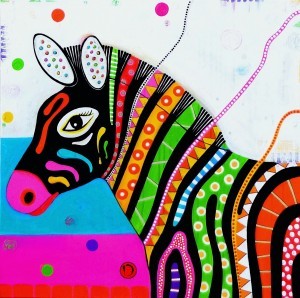When looking for paintings for sale in Australia it is important to be able to identify a quality painting, for sale from a gallery with a strong reputation, who understands the art market and what determines the value of a painting.

The art market has a global turnover of $50-60 billion dollars a year. The ‘primary art market’ consists of new art entering the market for the first time. Most contemporary art enters the primary market where value is speculative in nature. Art that has been sold at least once before forms the ‘secondary art market’. Obviously the primary market price of a work can affect its secondary market value.
Works from the same artist can vary in value due to size, condition and quality or the time at which the work was produced. Subject matter, medium and rarity also affect market demand. Some works can become historically meaningful over time and therefore of more value to museums and collectors.
Historically is it has been the ‘charismatic’ power of artworks (what draws people to want to possess them) that has driven value. ‘Art as a Financial Investment’ by RAJ Campbell, states that there are non-economic value measures such as “Do I like it?” or “Does it speak to me?” that have an economic effect because they become deciding factors in the purchase.
Generally contemporary art is valued by three aspects: Scale (size and level of detail), Intensity (effort) and Medium (quality of materials). Charismatic value can then add to the end market price.
Here are 7 Tips for Art Collecting in Australia:
1. Be inspired
Choose art that excites and inspires you rather than what is fashionable. Then you will enjoy your purchase while its value appreciates.

2. Consider the Provenance
Provenance is insight into the history of an artwork. This includes the date produced, subject matter, authenticity (including signature, title and paperwork) and legitimacy of the artist. It is wise to research the artist, their career and achievements, and their whole body of work.
3. Diversify your collection
You can balance out market fluctuations and spread your risk by building a collection of many artists and works that span different historical times.
4. Ensure Authenticity
A Certificate of Authenticity should be provided with your purchase and ensures its provenance (as mentioned above) for reassurance and insurance. Sometimes there will be a photo of the artist producing the actual work. Correct documentation and provenance increases collectability, desirability and market value.
5. Look for Quality
Paintings, prints and other works must be clearly hand-signed by the artist. For limited edition prints ensure the print is numbered and/or titled. The lower the total number of prints produced the more value it will have.
6. Avoid Prolificacy
An artist can over produce and that can affect long term value. If you want a piece by a prolific artist for your collection then research the period when the artist did their best work and buy from that period. Or request a one-off commission that has meaning to you. A reputable gallery or agent will be able to arrange a commission for you.
7. Use an agent or gallery

Whether you are looking to buy art for pleasure or as an investment consult with someone who understands the range of paintings for sale in Australia. Online art gallery Art to Art provides a one-on-one service where they discuss your investment goals, likes and dislikes and then recommend investment options. Art to Art has an exciting range of emerging and established artists, limited edition prints, original vintage posters, photographs and paintings for sale.